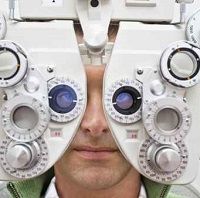Ripasudil Treatment for Patients with DME and Glaucoma
One month after ripasudil treatment, investigators saw the mean foveal thickness decrease significantly and noted decreases in intraocular pressure.

A new report has found that treatment with ripasudil can have positive effects on intraocular pressure as well as diabetic macular edema (DME).
One month after ripasudil treatment, investigators saw the mean foveal thickness (FT) decrease significantly and noted decreases in intraocular pressure as well.
Investigators noted ripasudil is known to improve DME because it is already understood that ROCK upregulates the vascular endothelial growth factor. ROCK has also been found to contribute to angiogenesis, hyperpermeability, and the pathogenesis of various pathologies such as inflammation and fibrosis, the study authors said.
Investigators from Japan retrospectively examined FT, IOP, and visual acuity in 12 eyes with DME in order to determine whether ripasudil improves DME. The 12 eyes received ripasudil treatment for open-angle glaucoma or ocular hypertension and investigators compared the results to 14 eyes that received no treatment. Neither the treatment patients nor the control group had a history of ophthalmic drug changes (except ripasudil, for the treatment cohort), ocular surgeries, or any treatments for macular edema such as intravitreal anti- vascular endothelial growth factor (VEGF) drug injection within the previous 3 months. All of the patients had type 2 diabetes.
The investigators found that the FT decreased significantly in the ripasudil treatment group, from 439 ± 72 µm at baseline to 395 ± 62 µm at 1 month. The decrease was significantly greater than the decrease observed in the control group. The mean intraocular pressure also decreased significantly in the treatment group compared to the control group, the investigators said: 17.3 ± 5.2 mmHg at baseline to 14.6 ± 4.0 mmHg at 1 month.
Investigators noted that the time from initiation of ripasudil therapy to the follow-up period ranged from 2 to 8 weeks. The findings suggest that ripasudil could reduce both intraocular pressure and improve DME, but investigators pointed out that visual acuity did not improve with the therapy. Investigators believe that in studies with both longer follow-up periods and more participants, a clearer determination can be made about whether ripasudil can improve best corrected visual acuity in DME patients.
“Physicians will tend to choose ripasudil for the patients who have glaucoma and DME,” study author Yoshiro Minami told MD Magazine. “Ripasudil may have positive effects not only on intraocular pressure but also on DME.”
Investigators noted that the current study could not determine the effects of systemic factors and optical coherence tomography characteristics on the discrepancy between the reductions in foveal thickness and best corrected visual acuity improvements.
“In the current study, the degree of reduction in the foveal thickness was smaller than those reported previously with anti-VEGF therapy, and the reassessment period was short,” the study authors wrote. “Furthermore, some reports have indicated that the improvement in best corrected visual acuity after anti-VEGF therapy is correlated with the baseline best corrected visual acuity, systemic factors, and optical coherence tomography characteristics.”
The paper, titled “Effect of Ripasudil on Diabetic Macular Edema,” was published in Scientific Reports.